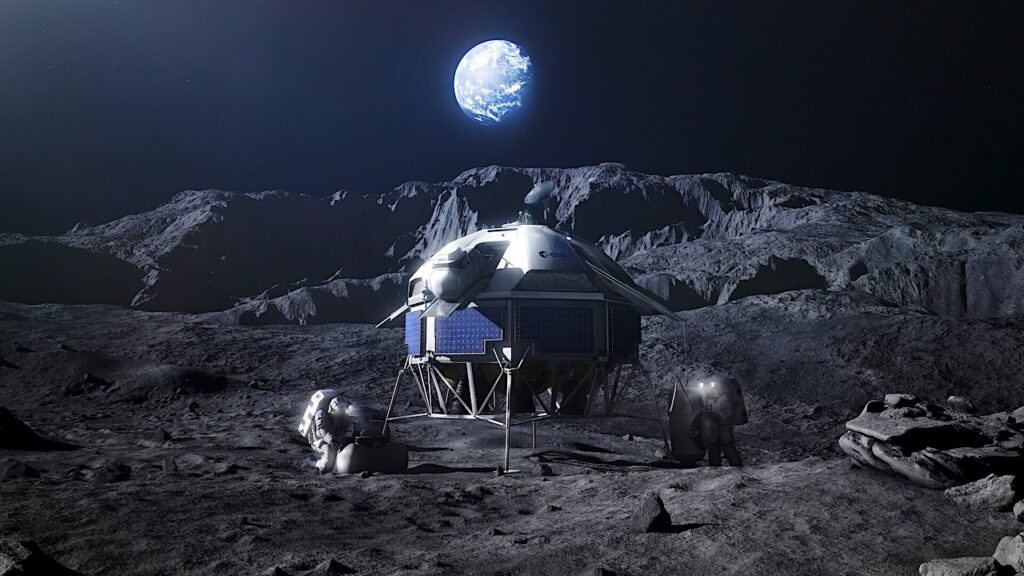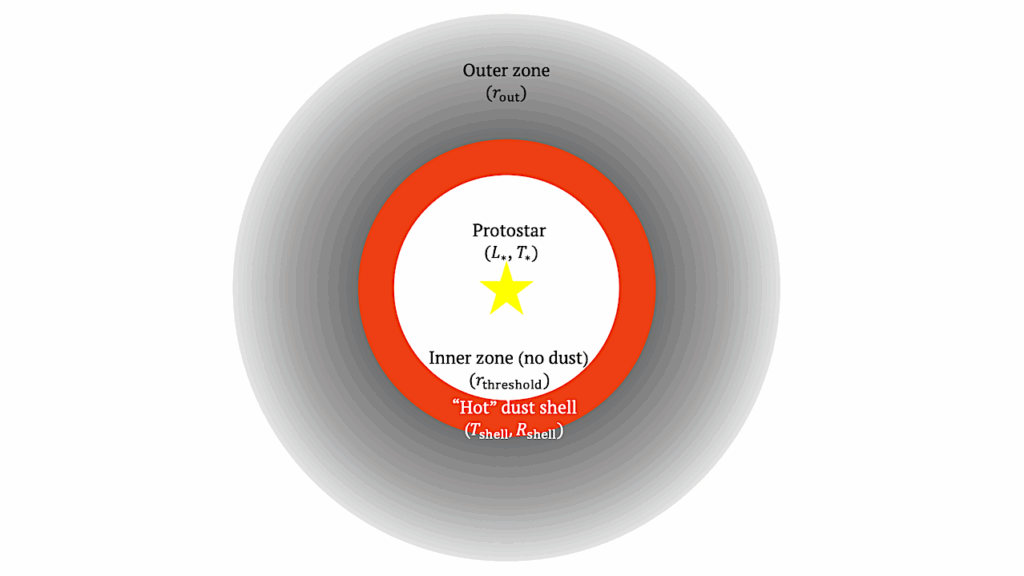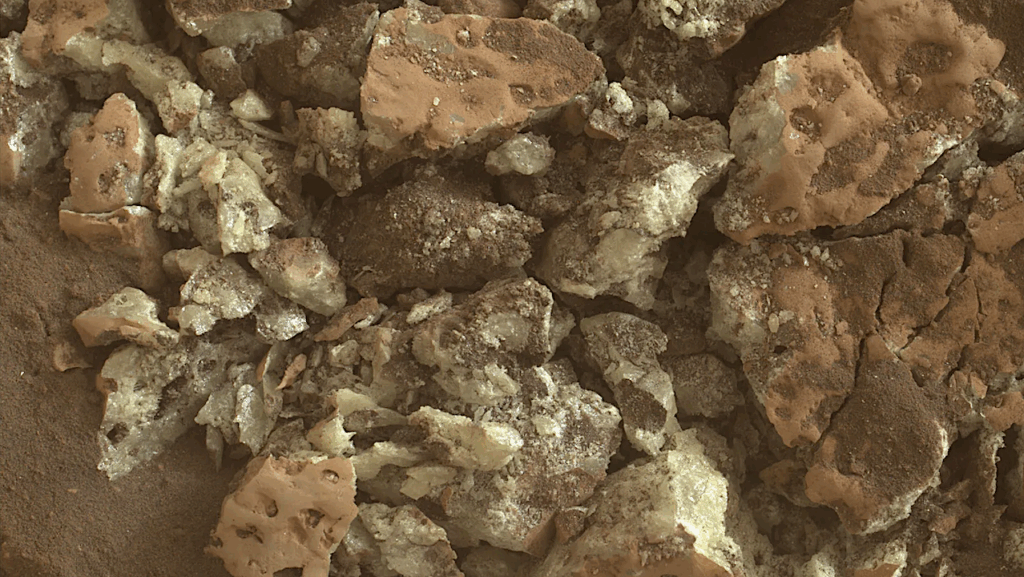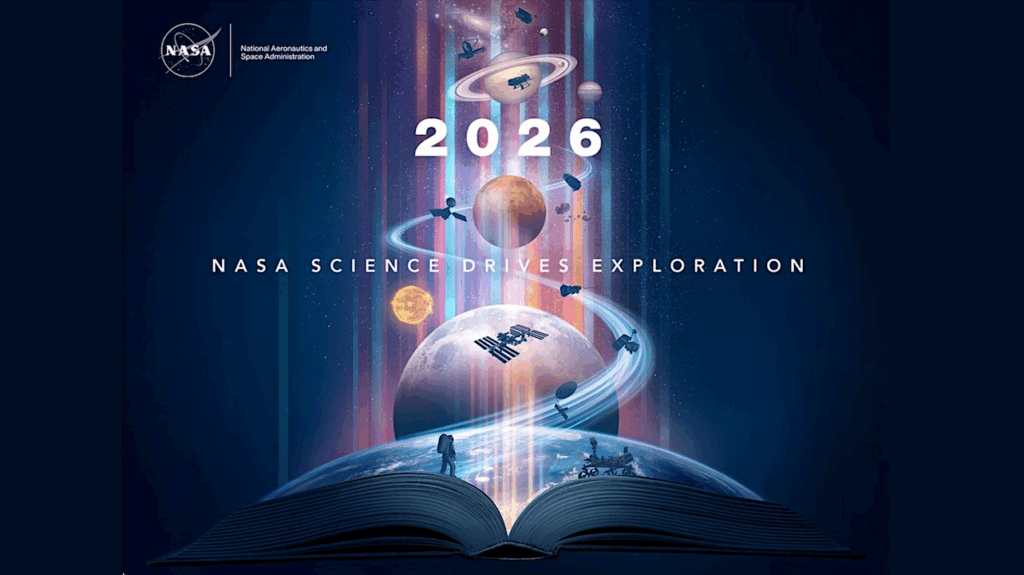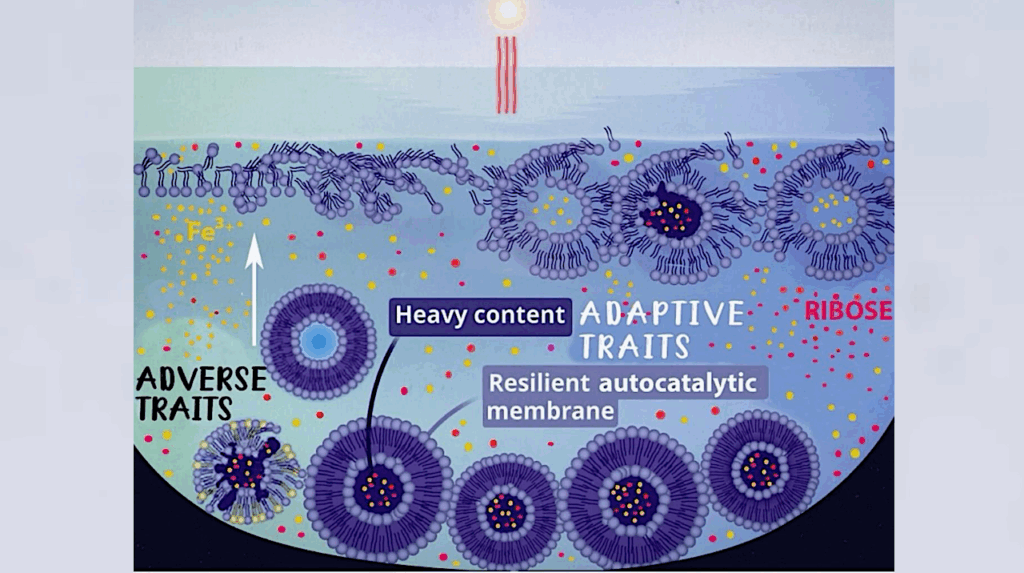The Gas-phase Reaction Of NH2 With formaldehyde (CH2O) Is Not A Source Of Formamide (NH2CHO) In Interstellar Environments
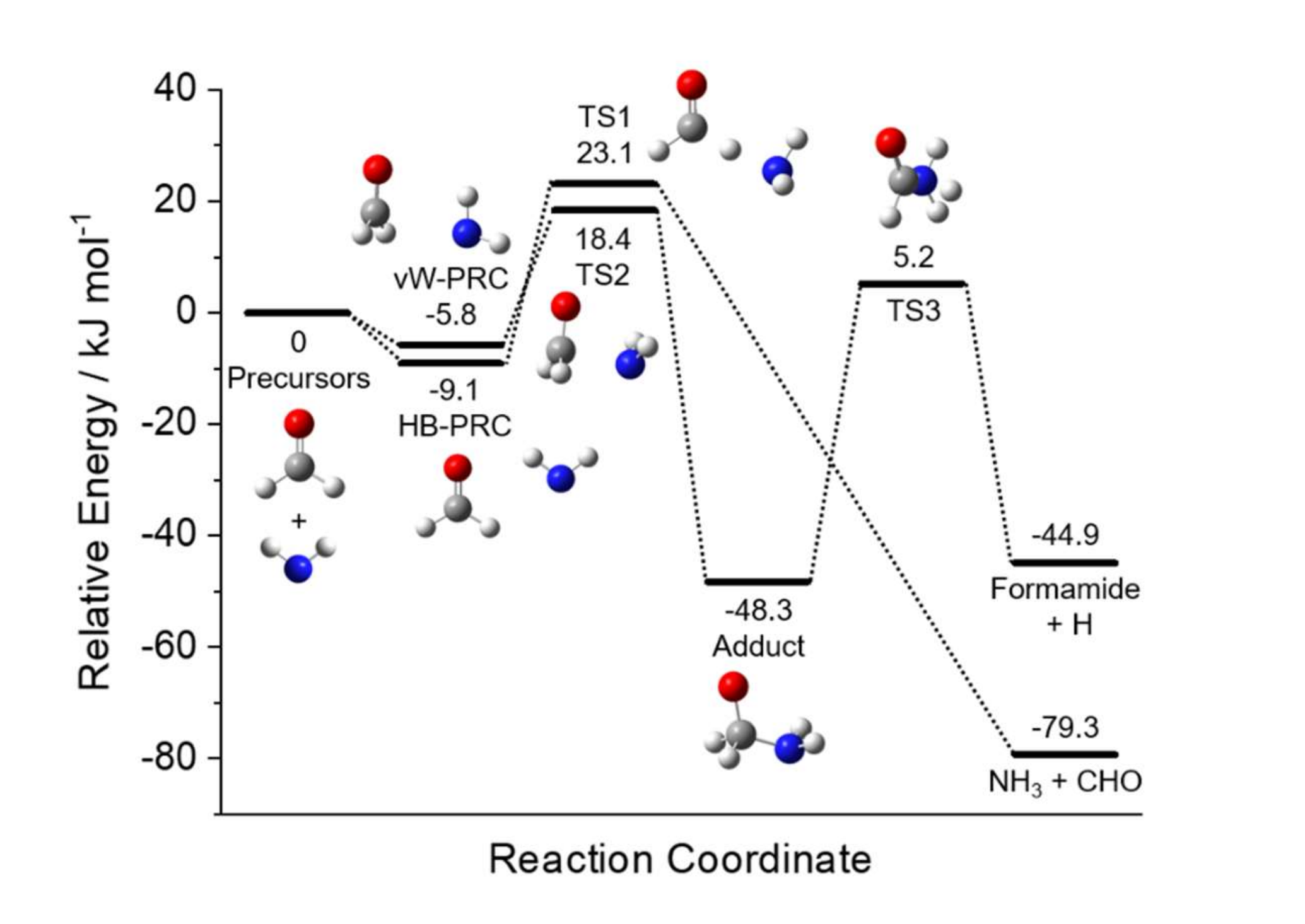
The first experimental study of the low-temperature kinetics of the gas-phase reaction of NH2 with formaldehyde (CH2O) has been performed. This reaction has previously been suggested as a source of formamide (NH2CHO) in interstellar environments.
A pulsed Laval nozzle equipped with laser-flash photolysis and laser-induced fluorescence spectroscopy was used to create and monitor the temporal decay of NH2 in the presence of CH2O. No loss of NH2 could be observed via reaction with CH2O and we place an upper-limit on the rate coefficient of <6×10-12 cm3 molecule-1 s-1 at 34K. Ab initio calculations of the potential energy surface were combined with RRKM calculations to predict a rate coefficient of 6.2×10-14 cm3 molecule-1 s-1 at 35K, consistent with the experimental results.
The presence of a significant barrier, 18 kJ mol-1, for the formation of formamide as a product, means that only the H-abstraction channel producing NH3 + CHO, in which the transfer of an H-atom can occur by quantum mechanical tunnelling through a 23 kJ mol-1 barrier, is open at low temperatures. These results are in contrast with a recent theoretical study which suggested that the reaction could proceed without a barrier and was therefore a viable route to gas-phase formamide formation.
The calculated rate coefficients were used in an astrochemical model which demonstrated that this reaction produces only negligible amounts of gas-phase formamide under interstellar and circumstellar conditions. The reaction of NH2 with CH2O is therefore not an important source of formamide at low temperatures in interstellar environments.
Kevin M. Douglas, Daniel Lucas, Catherine Walsh, Niclas A. West, Mark A. Blitz, Dwayne E. Heard
Comments: Manuscript, 14 pages, 4 figures. Supporting Information, 8 pages, 2 figures. Accepted for publication in The Astrophysical Journal Letters
Subjects: Astrophysics of Galaxies (astro-ph.GA); Chemical Physics (physics.chem-ph)
Cite as: arXiv:2208.12658 [astro-ph.GA] (or arXiv:2208.12658v1 [astro-ph.GA] for this version)
Submission history
From: Kevin Douglas
[v1] Fri, 26 Aug 2022 13:15:09 UTC (1,808 KB)
Full Paper https://arxiv.org/abs/2208.12658
Astrobiology, Astrochemistry


